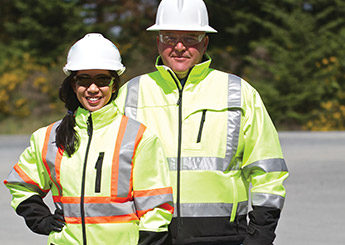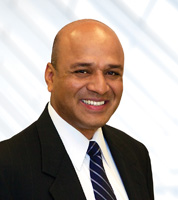Trends in personal protective equipment
PPE manufacturers talk innovation, challenges

Personal protective equipment is designed to keep employees safe every day at work, and is often the last line of defense against injury or death. Safety+Health, with the help of the International Safety Equipment Association, recently asked PPE manufacturers three questions: What PPE trends are happening now, what challenges are your customers reaching out to you with, and what technological innovations are here or on the horizon? Here are their responses.
1What recent PPE trends have you observed?
|
"One of the biggest recent trends is employees’ desire to be provided with workday safety gear that performs to the level of their ‘weekend gear.’ And not only to perform at that level, but to look just as cool. A worker who likes to hunt, fish or ski is familiar with the best in moisture-wicking, breathable fabrics, as well as comfortable compression fit gear. Given that familiarity, a pair of brown jersey gloves and a cotton duck coat and/or coveralls just doesn’t cut it anymore." |
|
|
– Greg Schrab, senior vice president of operations and product management, Ergodyne, St. Paul, MN |
|
|
"We see more employers who discover that simply handing out earplugs does not necessarily stop OSHA-recordable noise-induced hearing loss. The trend has definitely moved from ‘wear it’ to ‘wear it correctly’ – and then verifying that correct fit. Documentation of proper fit of a hearing protector is powerful information in the hands of the employee to confirm what a good fit feels and sounds like, and also valuable information for the employer in focusing training efforts on the right people to reduce liability for hearing loss." |
|
|
– Brad Witt, MA, CCC-A, director of hearing conservation, Honeywell Industrial Safety, San Diego |
|
"It’s becoming increasingly important to provide customers with an entire PPE solution for certain applications – like confined space, for example. In a confined space application, users may need everything from respiratory, gas detection, and fall and head protection, along with educational awareness and training on the current standards. Manufacturers are having to provide a portfolio of products, and not just the tangible items – hands-on application training and after-market support and services are also critical."
– Anne Osbourn, industrial and utilities marketing manager, MSA, Cranberry Township, PA
2What are customers reaching out to you about? What PPE challenges are they facing?
|
"If there’s a consistent theme across industries, it’s a desire to continue to improve comfort while not compromising the performance of PPE or the protection it provides. We’re always looking for ways to make workers forget they’re wearing PPE over the course of an 8-hour shift. Lighter, second-skin type of gloves that are form-fitting can deliver ultimate comfort. Along those lines, one of the things we see quite a bit when we work with companies is a tendency to overprotect. It’s understandable. Cuts, for example, cost an employer an average of almost $22,000 per incident. It’s even admirable in its intent, but well-intentioned companies are creating as many problems as they may solve. Asking workers to wear PPE beyond what is needed for the job can compromise comfort and performance and eventually trigger non-compliance." |
|
|
– Darryl Nazareth, senior vice president, operations and R&D Ansell, Iselin, NJ |
|
"Facial hair continues to be popular among males, including social movements such as ‘No Shave November,’ or ‘Movember.’ This is a challenge for PPE manufacturers because even a very little amount of facial growth can create a leakage risk in a tight-fitting respirator. We continue to receive employer questions on compliance, fit-test requirements and loose-fitting hood options."
– Eric Dietrich, product manager for respiratory protection, life sciences, Bullard, Cynthiana, KY
|
"We are seeing more requests for education and consultation from our customer base. New standards such as ANSI 105-2015 (glove testing criteria) and ANSI 107-2015 (high-visibility garments) are creating educational opportunities to better select the most appropriate PPE. As standards are updated, our customers are looking to manufacturers to educate on the changes, present how it impacts their business, and also make product recommendations based on what application is being performed. Too often people are caught up on competing to drive cost down at the time of purchase rather than taking the time to understand the application. Often the best option may not be the lowest price. Time trials measuring life of product in use compared to price will provide the most accurate cost of PPE safety gear." |
|
|
– Paul Harris, vice president of product strategy and innovations, MCR Safety, Collierville, TN |
|
"Style and comfort are the two main features customers request in their PPE. The challenges are that while some styles look better than others, PPE must – first and foremost – keep the worker safe. Sometimes you must forgo style for safety."
– Stacey Simmons, product manager for industrial head and face protection, Bullard, Cynthiana, KY
|
"In the food and beverage industry, while earplug use is very common, noise-induced hearing loss remains the second leading occupational illness [according to the Bureau of Labor Statistics] behind ergonomic issues. Certain Field Attenuation Estimation Systems for fit testing hearing protection devices use objective measures to help identify workers who may be at risk for noise-induced hearing loss from poor fit or an employee/earplug mismatch. In a recent study at a large metal can and lid plant, 28 percent of workers did not achieve adequate protection during baseline testing, and were identified as high risk. Of the 28 percent, 17 percent were able to be retrained on their earplug of choice, 11 percent needed a different earplug entirely, and 1.5 percent were required to wear earmuffs. Field Attenuation Estimation Systems and the interventions that accompany the fit-testing process can assist with training and result in higher attenuation for those at risk, and can be maintained over time." |
|
|
– Shari Franklin Smith, senior technical service specialist for food, beverage and agriculture/oil and gas, petrochem industries, 3M Personal Safety Division, St. Paul, MN |
|
|
"Cut resistance is the No. 1 concern in hand and arm protection. Specifically, combining cut resistance with other performance criteria such as heat, flame and abrasion resistance, in addition to a high level of dexterity, has been one area where customers are seeking solutions. This can be a particularly challenging issue, as many of the yarns that deliver good insulation from heat often have low abrasion resistance. The key is to blend yarns, creating a balance between good heat insulation and abrasion resistance while using coatings that enhance grip." |
|
|
– Matt Block, director of health and safety services, Magid, Romeoville, IL |
|
3What innovations and technologies are here or on the horizon?
"Wearable technologies such as radio frequency identification and biometrics are on the horizon in the safety market. These hands-free wearables can monitor vitals along with exposure limits to harmful elements/chemicals to help measure a worker’s proximity to danger zones. The thought is that these technologies could help improve safety in a variety of workplaces."
– Stacey Simmons, product manager for industrial head and face protection, Bullard, Cynthiana, KY
"The biggest thing on the horizon that everyone is trying to figure out is wearable technology. Under Armour, Nike, Adidas and others are spending a small fortune trying to figure out how to incorporate this new technology in gear to measure and help improve the training performance of athletes. At some point soon, the ability to track employees and measure their movements to help keep them safer is going to be a possibility. How that will be done and in what capacity remains to be seen, but will be very interesting."
– Greg Schrab, senior vice president of operations and product management, Ergodyne, St. Paul, MN
"We’re seeing personal protective equipment manufacturers developing innovative new materials and formulations that not only are improving PPE overall, but also reducing costs. By using proprietary, in-house yarns, PPE manufacturers can dramatically reduce their costs of materials and pass those savings on to customers – and those in-house materials are meeting or exceeding previous product performances. We’re going to see more and more of this within manufacturing."
– Darryl Nazareth, senior vice president, operations and R&D, Ansell, Iselin, NJ
"Glasses continue to improve with higher levels of anti-fog and scratch- resistant coatings. Additionally, softer, more flexible frame options like urethane will increase comfort for the wearer. Glasses will incorporate low- profile, lightweight, soft materials for better sealing, which will mimic traditional goggles. For future technology, similar data that FitBit devices provide today like body temperature, environmental temperature, heart rate and activity level will be incorporated into wearable PPE. Being aware of a sudden spike in body temperature or heart rate of a worker will save lives."
– Paul Harris, vice president of product strategy and innovations MCR Safety, Collierville, TN
"Integration of wireless and Bluetooth technologies within personal protective equipment are here and continuously evolving. Specifically in portable gas detection, the incorporation of Bluetooth technology opens up for further advancement in safety and data management by providing applications such as app-based awareness, instrument maintenance and lone worker protection. In the future, integrating this technology with other PPE such as accountability software for SCBAs would allow you to send messages to incident command providing even faster and more direct responses to potentially hazardous situations."
– Anne Osbourn, industrial and utilities marketing manager, MSA, Cranberry Township, PA
| Infographic |  |
Post a comment to this article
Safety+Health welcomes comments that promote respectful dialogue. Please stay on topic. Comments that contain personal attacks, profanity or abusive language – or those aggressively promoting products or services – will be removed. We reserve the right to determine which comments violate our comment policy. (Anonymous comments are welcome; merely skip the “name” field in the comment box. An email address is required but will not be included with your comment.)







